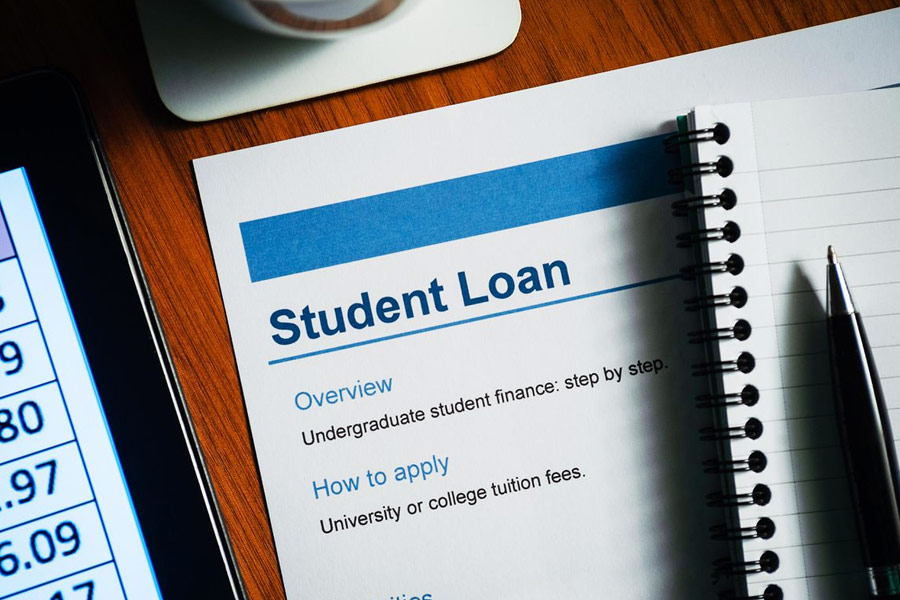Table of Contents
Nowadays, there is a change in the situation of student loans due to the impact of coronavirus. Most of the students are using subsidized and unsubsidized loans to pay the cost of their college. However, the United States department of education is offering these types of loans to many eligible students.
But there are some differences between both these loans. So if you are a college student and want to understand the difference between subsidized and unsubsidized loans, then you have come to the right place. This article is the complete guide for student loans. But firstly, it is vital to know the definitions of both the loans.
What do you mean by a subsidized loan?
When you enroll in school for at least half time, the government provides interest on a subsidized loan. Moreover, if any person is graduated, then the government also gives interest on your student loan. However, a student is not required to pay interest on a direct loan.
For example, if you have taken a $10,000 direct loan, then after four years, it will remain the same because the government will pay off the interest. This type of loan is for undergraduate students and low-income people. It depends on your eligibility.
What do you mean by unsubsidized loan?
It is also a type of federal loan and the student has to clear the FAFSA to be eligible. However, the eligibility of unsubsidized loans does not depend on financial need, and while you are in school or college, the students are responsible for the interest.
And if you cannot give interest, then the unpaid interest adds to your loan, making it costly. So you are responsible for paying the interest if you are taking this type of loan. And if you will not pay the interest, then the amount will add to your loan.
For example, if you borrow a $1000 loan at 2.75% and cannot pay off the interest, your loan amount will increase to $1247.
Difference between a subsidized and unsubsidized loan
The government has set the loan rates, and there is no minimum credit score needs to qualify. Moreover, they also maintain the interest of both loans. However, the students have to pass the FAFSA to become eligible for these loans. Nowadays, the amount of loan is limited for the students.
Here we are going to show some points that will clear the difference between both the loans;
Subsidized loan
- It is available for undergraduate students that are eligible for financial needs.
- The school will determine the amount of loan you will get. However, the amount does not exceed.
- When you are in school at half-time, the government will pay off the interest.
Unsubsidized loan
- It is also available for undergraduate students. And there is no requirement for financial needs.
- Your school will determine the amount of loan depending on your attendance and other financial aspects.
- In this type of loan, you are responsible for the interest.
If you decide to pay the interest while you are in school, your amount will accumulate and be capitalized. Below we will show some more vital aspects that will help you understand the difference between both the loans.
What amount of loan can I borrow?
As we have told before, your school will determine the amount of the loan and are you eligible to receive it or not. However, there is a limit on the total amount of loan you are getting borrowing for undergraduate or postgraduate studies. Keep in mind that the amount of your eligibility can be less than the annual loan limit. It depends on which year you are studying, and if you are dependent or independent.
If your parents are not eligible for a direct plus loan and you are a dependent student, you may receive the additional charges in your loan amount. And if you are an independent student, then there will be a limit in the amount of loan you are getting.
There are some vital points that you need to understand carefully.
● If you are an undergraduate student, then the graduate aggregate loan limit includes all the federal loans you get.
● Under the FFEL, it results in no other loan and the aggregate loan limit will include Unsubsidized loan that you get before.
● However, at the beginning of July 1, 2012, the graduate students cannot receive the direct subsidized loan.
Keep in mind that you will not be eligible for the additional loans if you receive the aggregate loan limit amount. However, you can borrow the again if you repay the loan to bring the amount below the aggregate loan limit.
Moreover, you may receive an additional amount if you are a graduate and a professional in some health organization program. For this type of loan, there is also a higher aggregate loan limit. So talk to the financial aid officer at your school to gather the information about aggregate limits.
Pro and cons of subsidized and unsubsidized loan
There are some advantages and disadvantages for both the loans.
Subsidized loan
Pros
- The government will give the interest on your loan.
- After leaving school, no amount will left.
- The period of eligibility is 150% of the length of the program you are enrolling in.
Cons
- If you are a graduate student, then you can’t get this type of loan.
- If your parents are earning too much, then you can’t qualify for this type of loan.
- Annual loan limits are lower for this type of loan.
Unsubsidized loan
Pros
- Both undergraduate and graduate students are eligible for this type of loan.
- You don’t need to show financial needs to qualify.
- You can pay in six months after leaving school.
- There is no time limit in your eligibility period for borrowing.
Cons
- You are responsible for paying the interest of your loan amount.
- The annual loan limit is less.
Similarities between both the loans
However, there are a lot of differences between the loans. But some points are similar between them.
- When you submit all your documents, then the school will offer you a financial aid package detailing how much you can borrow in both the loans.
- According to the education department, the interest rate for undergraduate subsidized and unsubsidized loans is 2.75%.
- The fees charged for both the loans are the same as 1.059%.
Some questions come in our mind before borrowing these types of loans
Some common questions come in everyone’s mind before applying for a student loan. We also try to answer every question. However, this game of questions and answers will clear all your doubts. So let’s get started.
1. How to know if I am eligible or not for both the loans?
You have to enroll in the half time of your school to receive these types of loans. However, you have to adopt a program that leads to a school certification to get the loan amount. However, if you are eligible for financial needs, then you can receive the subsidized loan.
On the other hand, the unsubsidized loan is available for both undergraduate and graduate students. Moreover, you do not have to show your financial needs to get this loan.
2. How to apply for a loan?
Firstly, you have to fill up the FAFSA form and submit to your school to apply for a loan. After submission, your school will go through your information and see how much loan amount you are eligible for. Lastly, after completing all these formalities, you will receive your amount.
3. How much time will it take to receive my loan amount?
There is a limit to receiving the loan amount if you are a first-time borrower. It is not applicable in unsubsidized loans. However, for more than 150% of your program’s total length, you can receive the subsidized loan. It is known as the maximum eligibility period that depends on the time of your course. You can watch the catalog of your school to find out the length of your program.
For example, if you have a four-year graduation degree, you have six years to repay your loan amount. Moreover, if you are having a two years graduation course, then the maximum period will be three years.
However, if you change your program, then the maximum eligibility period will also change because every program has its length. For example, if you receive any loan and you change your course, then the amount you receive previously will add on to your new maximum eligibility period.
4. Is there any charge on a loan instead of interest?
Yes, in all subsidized and unsubsidized loans, there is a loan fee as an extra charge. However, the loan fee is the percentage of the loan amount and is proportionally minused from each disbursement.
5. What are the additional steps to take to get a loan?
Keep in mind that your school will tell you how to accept the loan if your financial packages include student loans. However, you have to complete entrance counseling. It is a tool that helps you to understand the obligations to repay the loan.
Secondly, you have to sign a Master Promissory Note to agree to the terms of loans. Now contact the school’s financial aid office to understand all the details of receiving the loan amount.
6. How to receive my loan?
Firstly, the school will apply loan funds to your account to pay for all the school charges. If any loan funds remain, then it will return to you. However, all the loan funds are used for your education expenses.
7. After receiving the loan amount who will contact?
The loan services will contact you after receiving the loan. The loan servicer will provide all the additional details and updates of your loan amount.
8. At which time I have to repay my loan?
After completing your graduation and leaving school, you have a six month period to repay your loan. You will receive all the essential repayment details from your loan servicer during this period. Moreover, you will get the notification of your first due date.
9. What type of plan for loan repayment is available?
There are many repayment options available to meet individual needs. However, the loan servicer will help you to understand all the repayment options and which is best. Depending on the plan you select, you have ten to twenty-five years to repay your loan.
10. What to do if I face any problem in repaying the loan?
Contact your loan servicer immediately if you are not able to repay your loan on time. He will help you to know the options that will let go of the repayment smoothly.
11. Can I cancel a loan or decrease the amount?
Before the money disbursement, you can cancel your loan by notifying your school. However, there is a time frame to cancel it after the amount disbursement. However, your school will provide you with complete information to understand the time frames for canceling your loan.
12. Can my loan be forgiven?
Yes, there are some conditions in which you can get eligible to discharge your loan.
Do you have to pay back the unsubsidized loan?
Whether your loan is subsidized or Unsubsidized, the loan is a loan. It means that you have to pay off your balance like scholarships or grants. However, you have to pay your loan after graduation. It will help you to finance your education.
You have to repay your loan with interest. However, the unsubsidized loan does not depend on your financial need, and interest will begin as soon as you receive the money after graduation.
Commercial loans
If you do not qualify for enough support in loans from the education department, you may return to commercial lenders. However, these types of loans charge higher interest than the federal loan. The bank provides the loan with a profit and does not invest in the student’s future.
Perkins loans
This type of loan offers to college students in lower interest based on financial need. However, the student is pleased to repay the loan to college, and the subsidy keeps the interest low. Moreover, if you enroll in the military program or become a teacher, then the department of education can forgive your loan depending on the program type.
Loan repayment strategy
The type of loan you will receive in the college may affect your approach to repay the loan. Firstly, to lessen the impact of interest charges, you have to devote all your loan payments to the highest interest rate. If you took out a high amount of unsubsidized loans, you might have to repay all your lenders using a single consolidation.
Should I prioritize paying a subsidized or unsubsidized loan?
It is the best choice to repay your unsubsidized loan just before paying back your subsidized loan. Because the unsubsidized loan is larger to pay the interest in school, consider you are an independent student studying in the final year of school and decide to borrow a subsidy loan of $5,500 and an unsubsidy loan of $7,000 at 2.75%.
If you cannot repay your amount by the time, it would grow your money by $288. In this situation, you have to pay off $7,288, but the subsidy loan will remain the same. By paying the higher balance firstly, you can save interest.
Final thoughts
There is a big difference in both the loans while you are in school or after leaving. Try to select the best student loan repayment strategy for debt-free after college. In most cases, students decide to choose subsidized loans because the government is paying off the interest that helps you save a bit of money.
If you are still unsure which is the best option, this article will clear all your doubts. Therefore, read the whole article, and make a better decision for your future.




